Lincoln Design Heritage: Zephyr to LS (1936-2000)
by Jim and Cheryl Farrell
(Be sure to scroll down for photos)
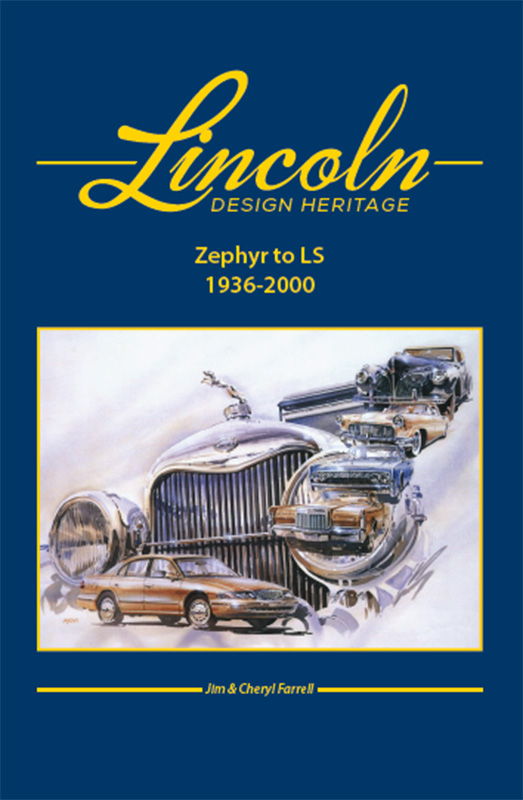 This large-format (approx. 10″ x 13″) heavy (over six pounds) hardbound book offers coffee table appeal along with a plethora of photographs, artwork and images (1,600 photos total), over 230 bios of designers and clay modelers and a comprehensive history of Lincoln’s most important decades. It is a 475-page story plus bibliography and index – over 200,000 words. This limited-edition book is a labor of love by the Farrells, who traveled to Detroit/Dearborn on numerous occasions to scour the Ford Archives, the Henry Ford Museum historical records, as well those at the National Automotive History Collection at the Detroit Library. They also did research at the Art Center College in California, the Collier Automotive Museum collection in Florida as well as other resource sites. The Farrells interviewed hundreds of former Ford employees in order to factually document events chronicled in their book.
This large-format (approx. 10″ x 13″) heavy (over six pounds) hardbound book offers coffee table appeal along with a plethora of photographs, artwork and images (1,600 photos total), over 230 bios of designers and clay modelers and a comprehensive history of Lincoln’s most important decades. It is a 475-page story plus bibliography and index – over 200,000 words. This limited-edition book is a labor of love by the Farrells, who traveled to Detroit/Dearborn on numerous occasions to scour the Ford Archives, the Henry Ford Museum historical records, as well those at the National Automotive History Collection at the Detroit Library. They also did research at the Art Center College in California, the Collier Automotive Museum collection in Florida as well as other resource sites. The Farrells interviewed hundreds of former Ford employees in order to factually document events chronicled in their book.
In 1999, Jim & Cheryl Farrell wrote and published the highly-acclaimed ‘Ford Design Department Concept & Show Cars 1932-1961’ (399 pages, over 900 photos, published in 1999) now fetches $2-300 on the used book market. In that book, every chapter was about a different car; therefore, each chapter stood alone and the book could be read out of order without losing continuity.
‘Lincoln Design Heritage’ flows chronologically, beginning with the pre-Zephyr John Tjaarda experimental rear-engined streamliner and subsequent concept/development cars which evolved into the finished 1936 Lincoln Zephyr. Then the book continues from the 1930s through the early 21st Century.
As the story of Lincoln unfolds, it becomes obvious that many of Lincoln’s problems were caused by a lack of identity and the authors mention this throughout the book. The original 1920s Model L had undistinguished styling, although Edsel Ford tried to create excitement by encouraging independent coachbuilders to add some magic to the brand. In 1931 the handsome and expensive Lincoln K-series was introduced but it was never successful because the Great Depression caused the ultra-luxury market to evaporate. The Lincoln Zephyr was a great success and saved the brand, because it was designed to compete with upper-middle and near-luxury segments of the market alongside the Packard 120 and LaSalle. The 1940 Lincoln Continental was Edsel Ford’s attempt to move up in price with a personal luxury car. World War II and Edsel’s death in 1943 caused the Lincoln brand to lose its way.
Lincoln’s objectives changed throughout the 1950s. The authors wrote, “Every model Lincoln produced between World War II and 1960 was totally different from the last. As a result, Lincoln lacked continuity in design and message. It’s little wonder then, that during the period 1958-60, Lincoln was almost relegated to the ash heap of has-beens like Hudson, Packard, Studebaker and Edsel.” The 1958-60 Lincolns and Continentals models did not sell well because of the unusual, bizarre styling (apparently championed by Vice President of Design George W. Walker) and quality issues with the new unitized body construction. In the 1958-60 period, more than five Cadillacs found buyers for every Lincoln sold. During that period, Lincoln “racked up $60 million in losses,” according to the book. Soon-to-be Ford President Robert McNamara seriously considered discontinuing the Lincoln marque – he claimed that the Lincoln brand had never made a profit – but relented after seeing the proposed 1961 Lincoln Continental, a clean, slabsided design which later won the Industrial Design Institute award for its overall appearance and execution.
One of many interesting and obscure stories brought to light in the book is the ‘Continental Mark II 1953 Studebaker Club’.
The 1960s slabside era was good for the brand and its profile was raised when a special Lincoln was provided for President John F. Kennedy. In 1966, the addition of a coupe model helped Lincoln sales considerably – almost 16,000 coupes were sold during its first model year. The debut of the Mark III personal luxury car as a 1969 model provided Lincoln with a direct competitor to the Cadillac Eldorado. The Mark III was a big success. Over a three-plus year period, over 81,000 examples were sold. Its successor, the Mark IV coupe had 51% higher unit sales than the ’72 Cadillac Eldorado coupe.
The book also contains the story of small Lincoln proposals in the 1970s and ’80s as product planners agonized over the combined ever-tightening federal regulations, the uncertainly of future fuel supply and price increases due to growing inflation.
The development of the 1984-92 Mark VII and its successor, the Mark VIII, is covered in detail. I found the Mark VII chapter interesting because its development began when Ford was considering downsizing all of its cars – fearful of continuing stagflation and gas shortages. The book noted that in the 1979-82 period, Ford Motor Co. had lost $2 billion. Management was freaked out. An April 1981 memo from Executive VP Red Poling mandated that all future Lincolns were going to be FWD with smaller engines. A V6 front-wheel-drive Mark VII and VIII were under consideration. The make-it-smaller edict disappeared when sales perked up due to an improving economy. This book is full of such surprises because the Farrells were given access to a lot of insider information.
There are separate chapters on the first, second and third generation Continentals. The book points out that there was never any market research for this model. Jac Nasser once said that the Continental was “a car in search of a market.”
Much space is devoted to the Lincoln Town Car, deservedly so. When the TC was downsized and restyled for 1980, Lincoln kept the crisp lines and signature upright grille. Yearly styling changes and the use of Designer-Series special editions kept the metal moving.
Following the severe double-recession of 1980-81, Lincoln sales drastically improved. In 1986, Cadillac reduced the size of their vehicles and offered styling which – from a distance – was hard to distinguish from its lesser stablemates, Buick and Oldsmobile. Lincoln reaped the benefits of this as Caddy’s sales dropped by almost 40%. Prospects fled from Caddy showrooms to Lincoln dealers because the were turned off by the new, smaller Fleetwoods, DeVilles and Eldorado, all of which were front-wheel drive. During the 1987 model year, Lincoln’s sales grew by 155% and it went from 11th in auto brand sales to 9th position. Lincoln outsold Cadillac in 1988 for the first time since 1940.
The Town Car was redesigned for the 1990 model year and remained Lincoln’s best-selling offering for the next decade. The chapter on the new 1990 Town Car was riveting. Because the design and engineering departments in Dearborn had been so downsized over the years, the final product development of the 1990 Town Car was done by IAD of Worthing, England, a independent company and FoMoCo sub-contractor. The problems encountered, as described in the book, are part Keystone Cops comedy and part tragedy. Nevertheless, the end result was successful – in a save-Nell-from-the-RR-tracks kinda way. When the Town Car was restyled for 1998 there was much gnashing of teeth over the styling of it. A proposal from Ford’s California Concept Center battled with Dearborn’s in-house design. Then Jac Nasser stepped into the picture and wanted it to look more “European.” The result was a more rounded and bulbous vehicle. In the 1998-2000 period, Town Car sales averaged 90,000/year. Then they began to slide. A refresh in 2003 was based on owner input and the result was a nicer-looking front end and more useful interior. Sales perked up but then began to fall again as the market shifted to SUVs. By 2008, Town Car sales declined to about 13,000/year. The last Town Car rolled off the line in 2011.
The TC has become an icon of sorts. In 2019, Mike Seely of The New York Times wrote an article on the “Comfort-Loving Cult” of the legendary Lincoln Town Car. Jim Farrell remarked, “It will be missed.” Indeed. In 1988, Lincoln sold 201,113 Town Cars. Total sales of all Lincoln models was 105,405 vehicles in 2020.
It is interesting that the book ends with the development of the Lincoln LS and the Lincoln Navigator. The Navigator was the first Lincoln SUV – a response to ever increasing sales of truck-based passenger vehicles. Such vehicles now dominate the automotive market, as well as the luxury segment. It was developed on a relative shoestring and quickly too because it was derived from Ford’s Expedition SUV. The Navigator came out almost a year before the Cadillac Escalade and its popularity was a surprise to most Ford execs. In 1998, Lincoln outsold Cadillac because of the sales added by the Navigator. The Navigator continues to be part of Lincoln’s all-SUV lineup although the brand’s smaller – and less expensive SUV models – account for far greater sales.
The 2000 Lincoln LS four-door sedan was an attempt to lure 40-something age prospects away from the siren song of sporty, rear-wheel drive, status-building imports like Mercedes, Audi, BMW and Lexus. This younger buyer strategy was important for Lincoln. In 1999, the average age of the Lincoln buyer was 63 years old, compared with 52 for Mercedes and Lexus and 44 for BMW. The LS was built on the same platform as the sporty Jaguar S-Type sedan. When introduced, the LS received some very good reviews in the automotive press. It won the Motor Trend ‘Car of the Year’ award. Consumer Reports called it “the best American car we’ve ever driven.”
The LS sold briskly for the first three years, then sales declined. One reason was that Ford Motor Company never fixed the shortcomings of the original model. Part of this was due to the turmoil caused by Ford CEO Jacques Nasser and his many programs and schemes which hurt future product development. The book is sprinkled with detailed stories of political infighting and intrigue over the decades. Much of the information came from retirees who were reluctant witnesses.
The 21st century luxury vehicle market is much different that the market of the early 1990s. Entry-level luxury models are now priced the way mid-priced models (Mercury, Oldsmobile, Pontiac, etc.) used to be stickered. Lincoln and Cadillac once fought for first place among luxury car sales leaders. No more. First of all, the top sellers aren’t cars – coupes or sedans, they’re SUVs and crossovers. Secondly, foreign brands now dominate the luxury vehicle market. In 2020, Mercedes-Benz was the luxury vehicle leader (selling 325,915 vehicles in the U.S.), followed by BMW, Lexus, Tesla, Audi and Acura. Cadillac and Lincoln duked it out for seventh and eighth place respectively. Compare this with 1993, when Mercedes-Benz sold only 61,899 cars, compared with 255,869 Cadillacs and 177,208 Lincolns.
The book is full of photos I’ve never seen before and information I never knew … and I consider myself fairly knowledgeable about Lincolns. The book is also sprinkled with artwork by well-known professionals such as Ken Eberts, the late Randy Mytar, Richard Nesbitt as well as numerous retired Ford designers. Rare prototype photos and text reveal the painstaking and precise development for each model.
Verdict: Highly recommended.
This is absolutely the best Lincoln book I’ve ever read and one of the best automotive books I’ve ever encountered. It is thorough, accurate and a very satisfying read. I learned much from it.
Price of the book is under $100. A copy can be reserved by phone (541-673-4039), e-mail (cfarrell57@gmail.com) or mail (Jim & Cheryl Farrell, 870 Black Oak Drive, Roseburg, OR 97471).
Lincoln Design Heritage: Zephyr to LS (1936-2000)


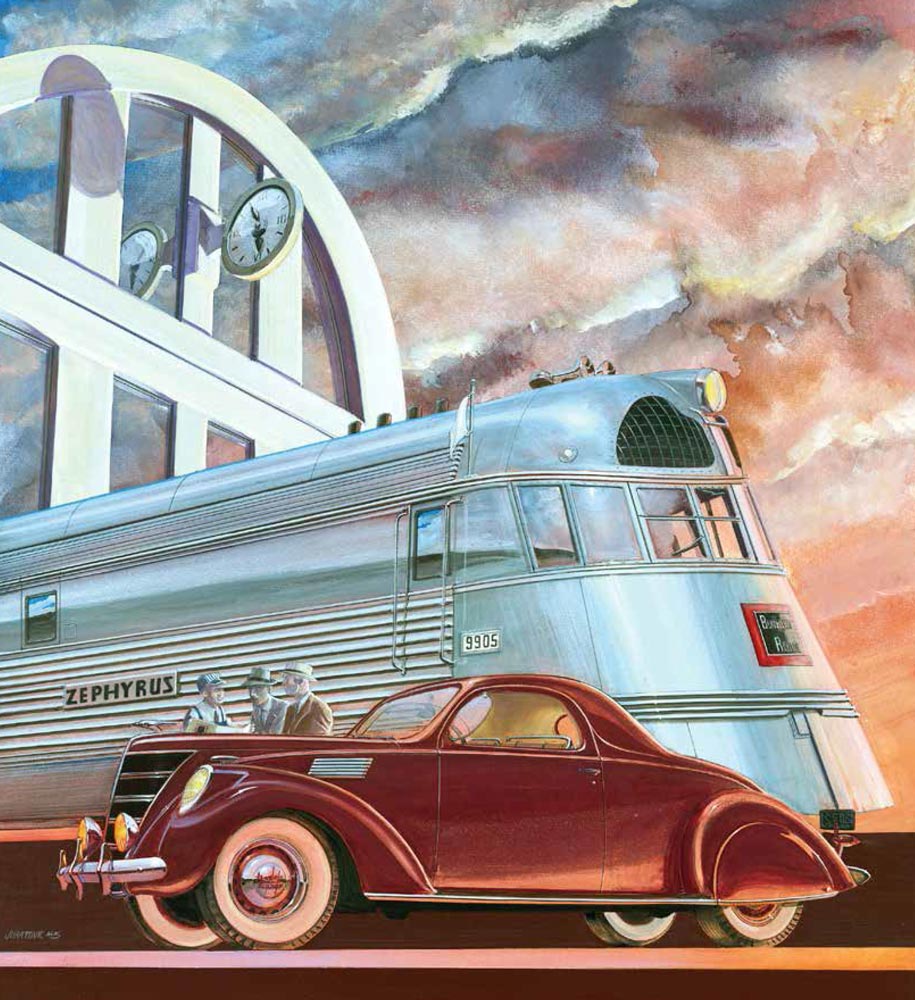
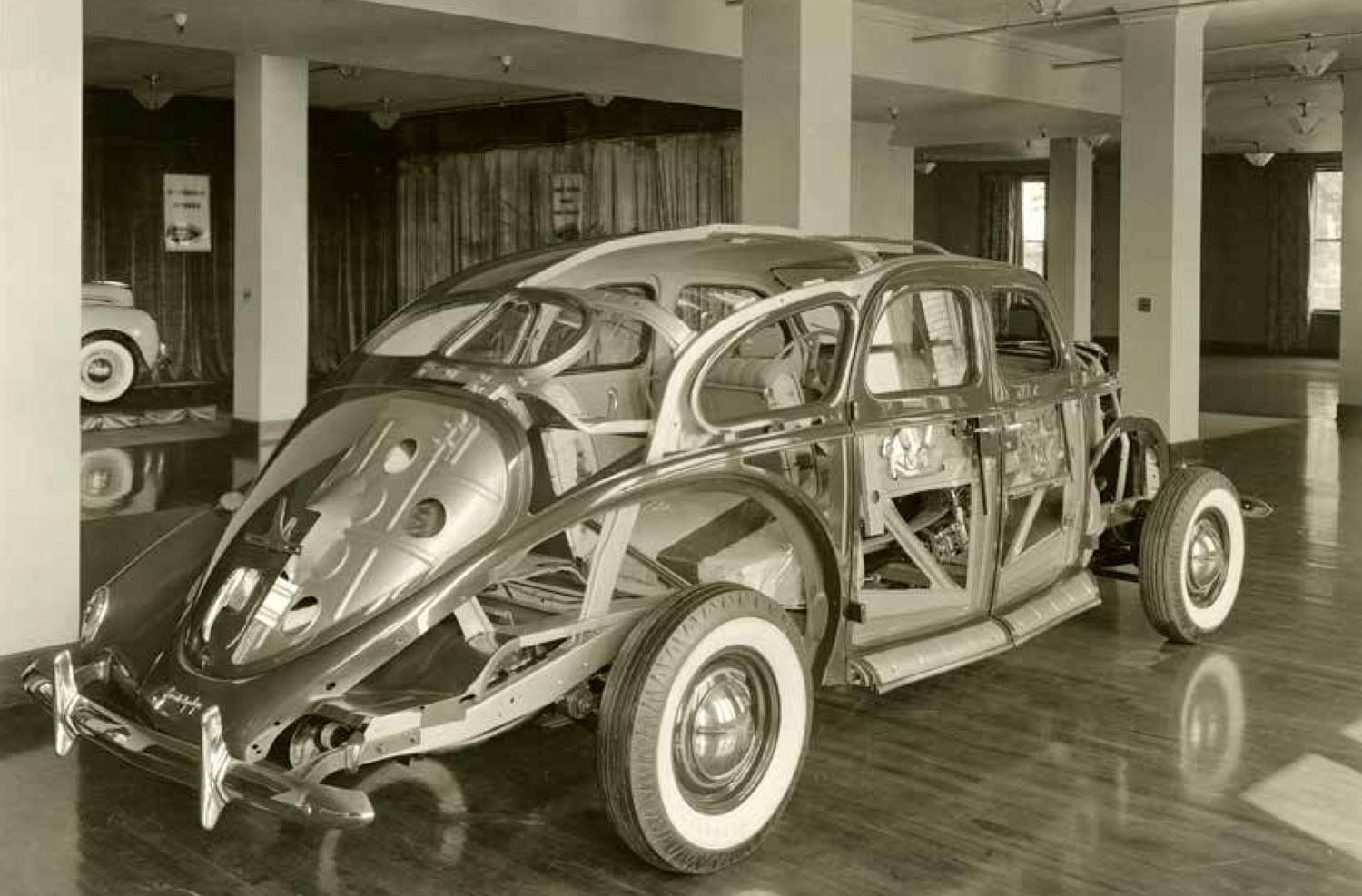
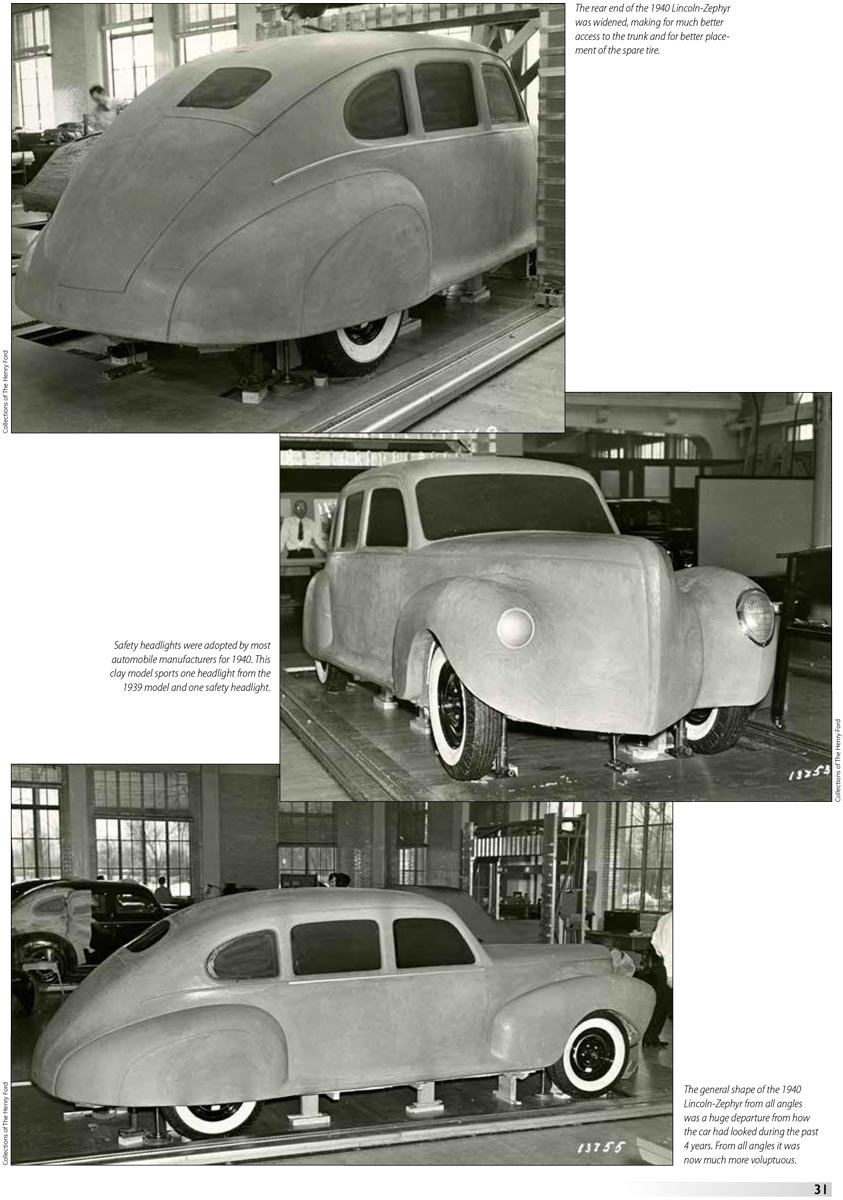
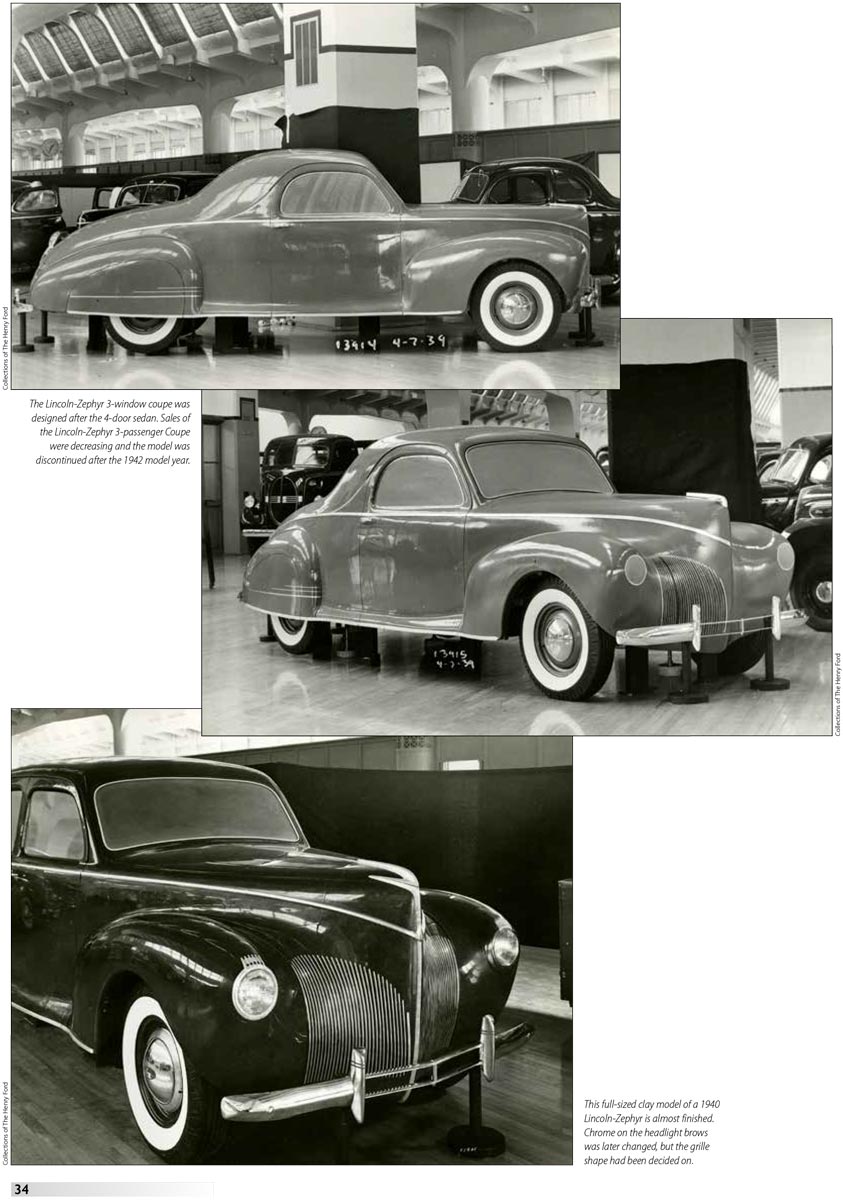
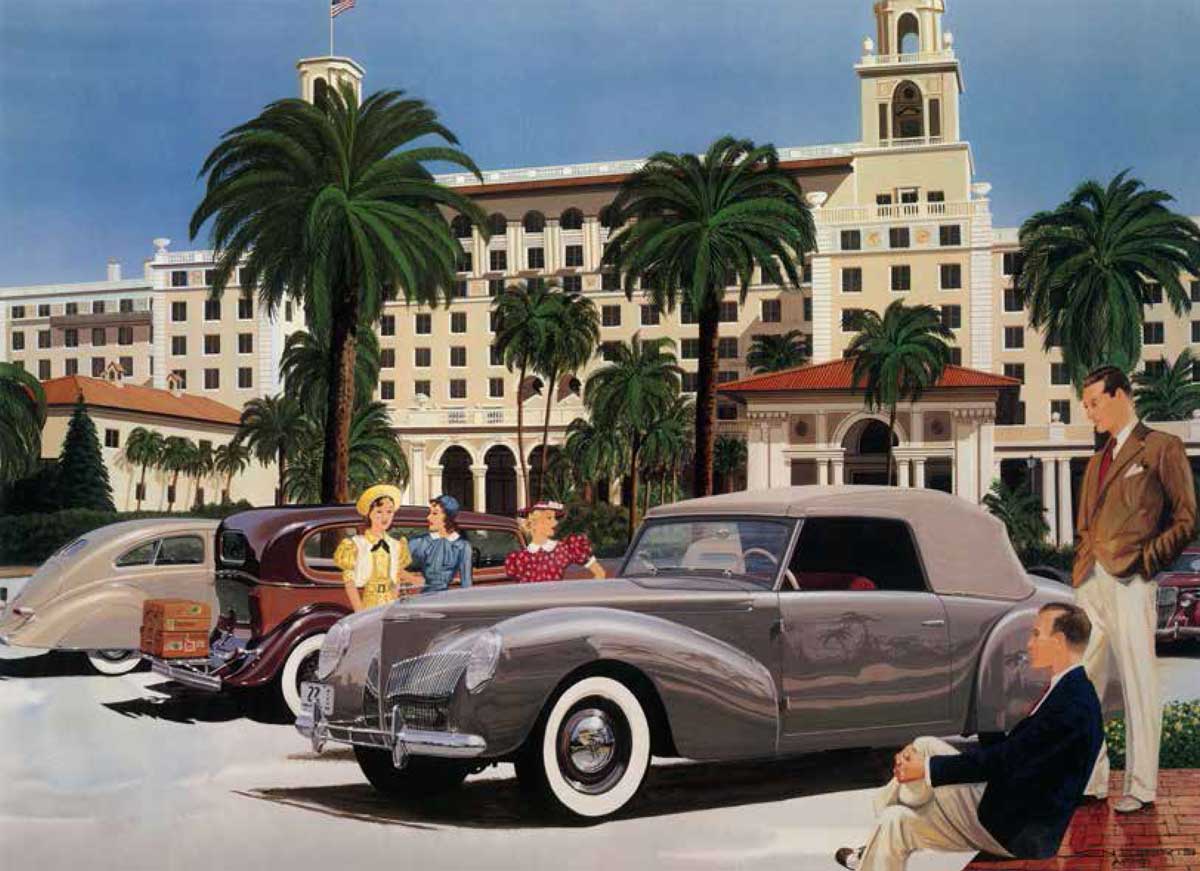
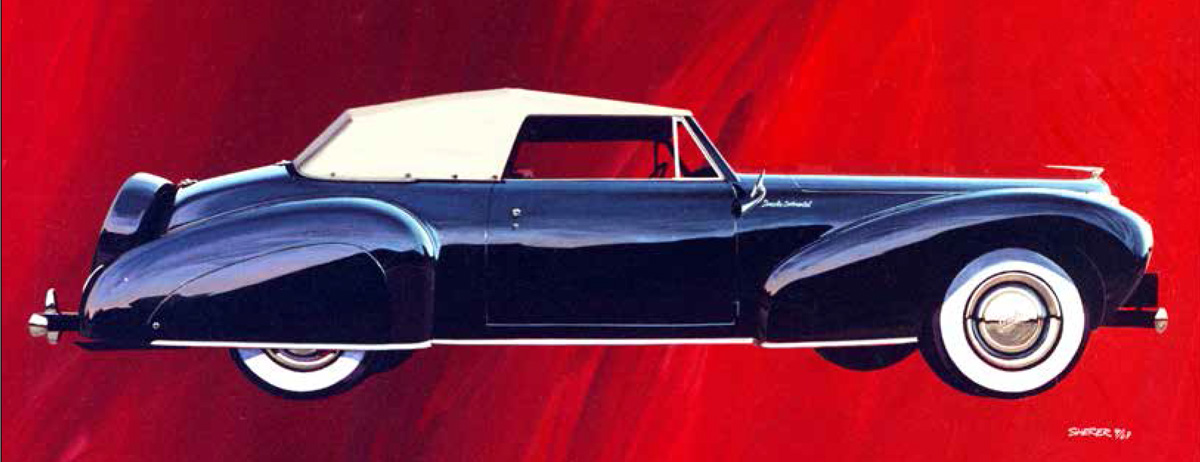
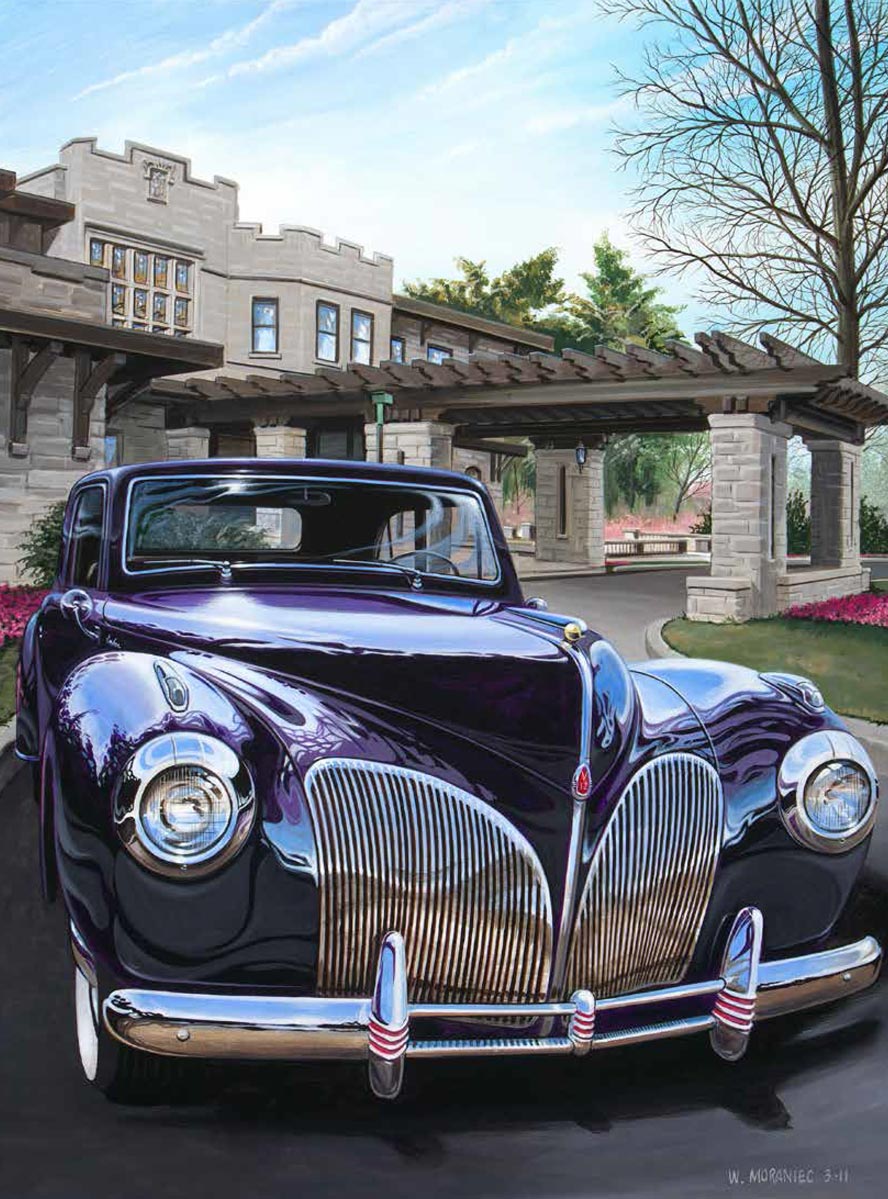
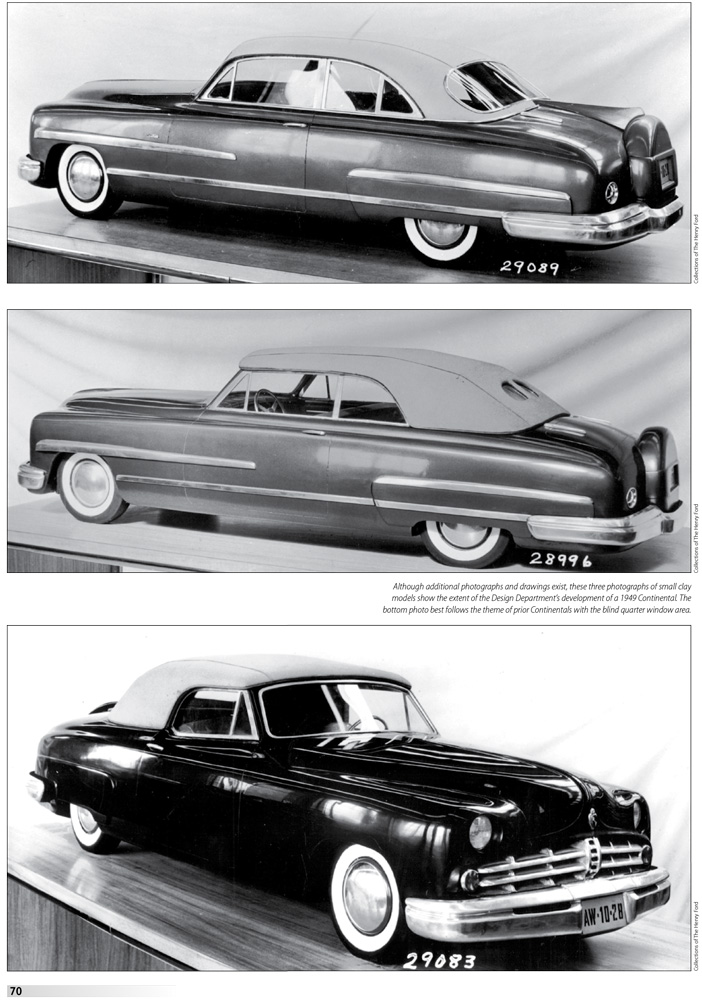
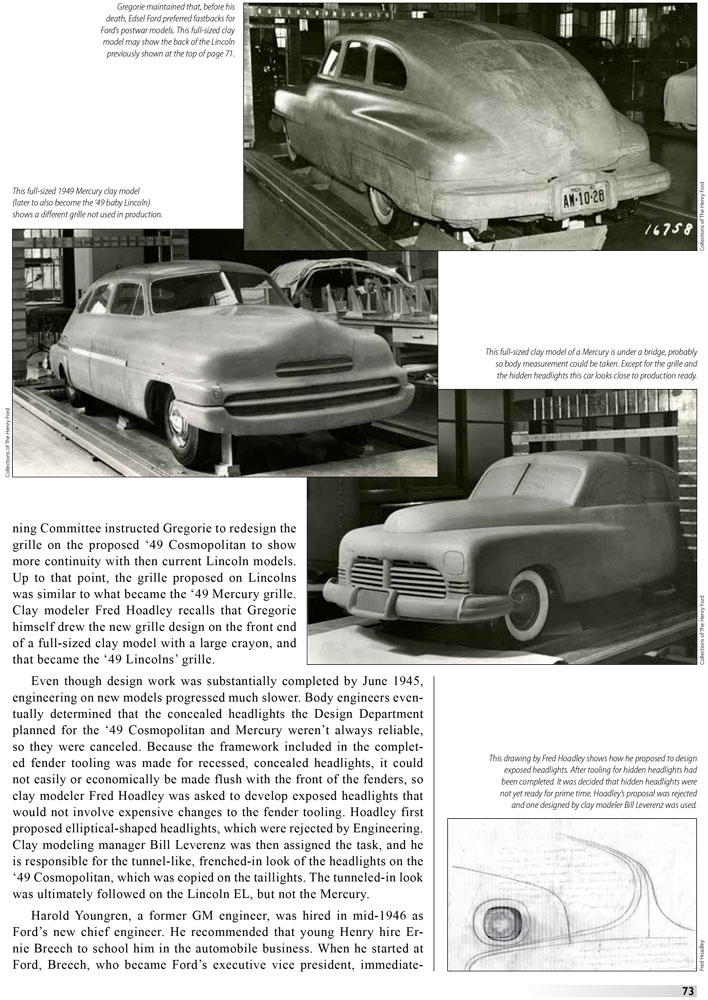
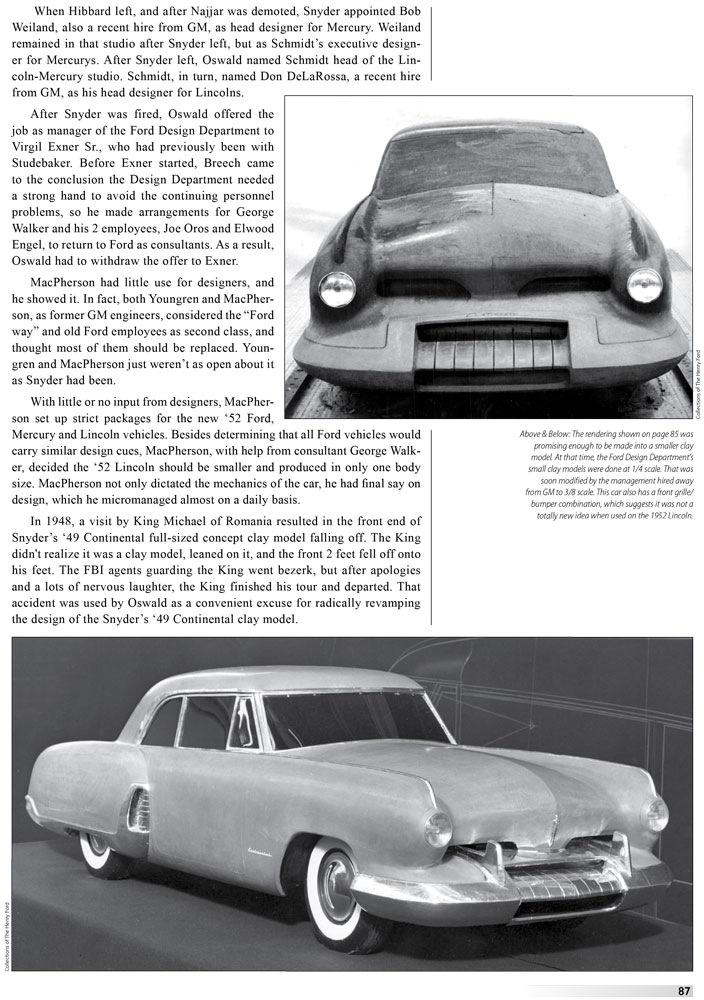
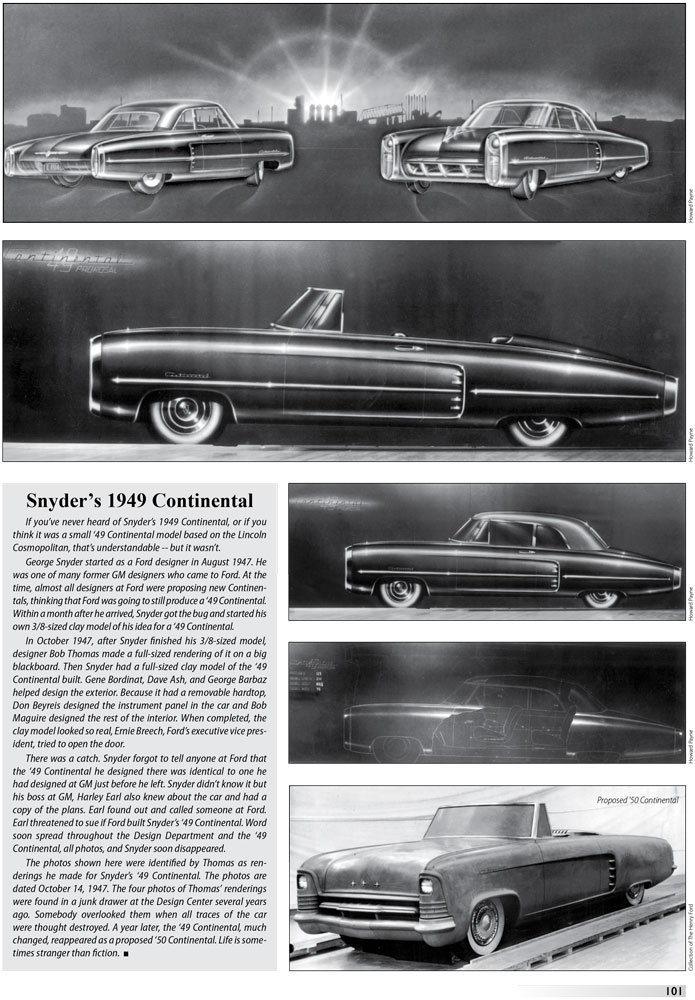
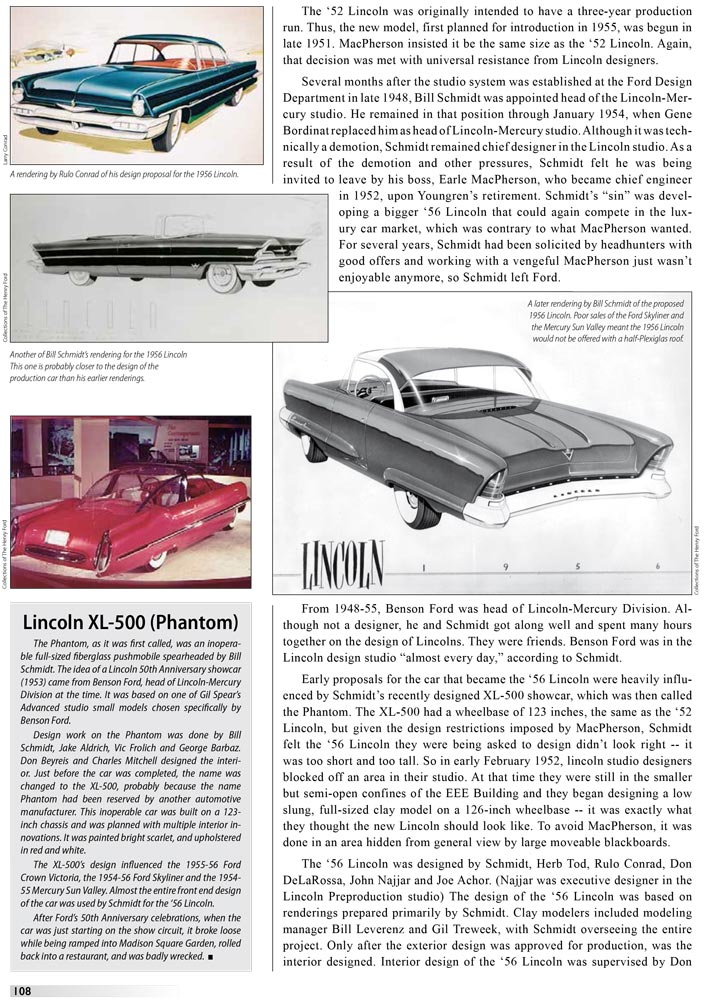
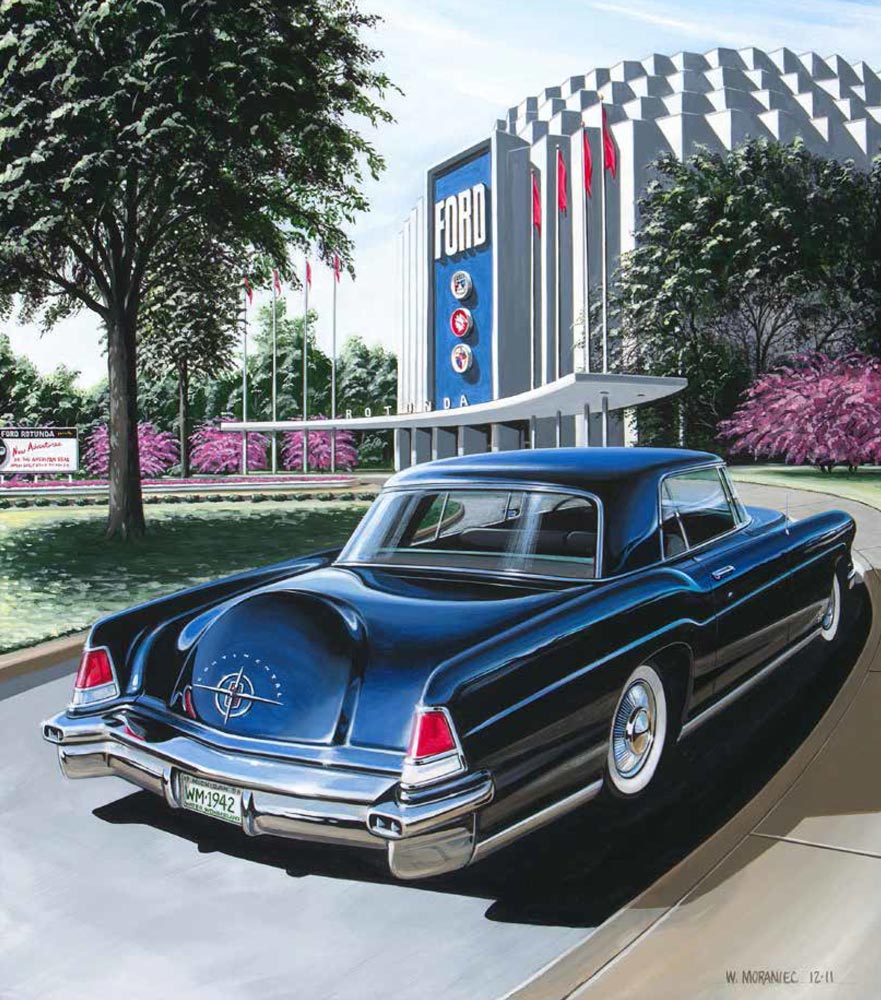
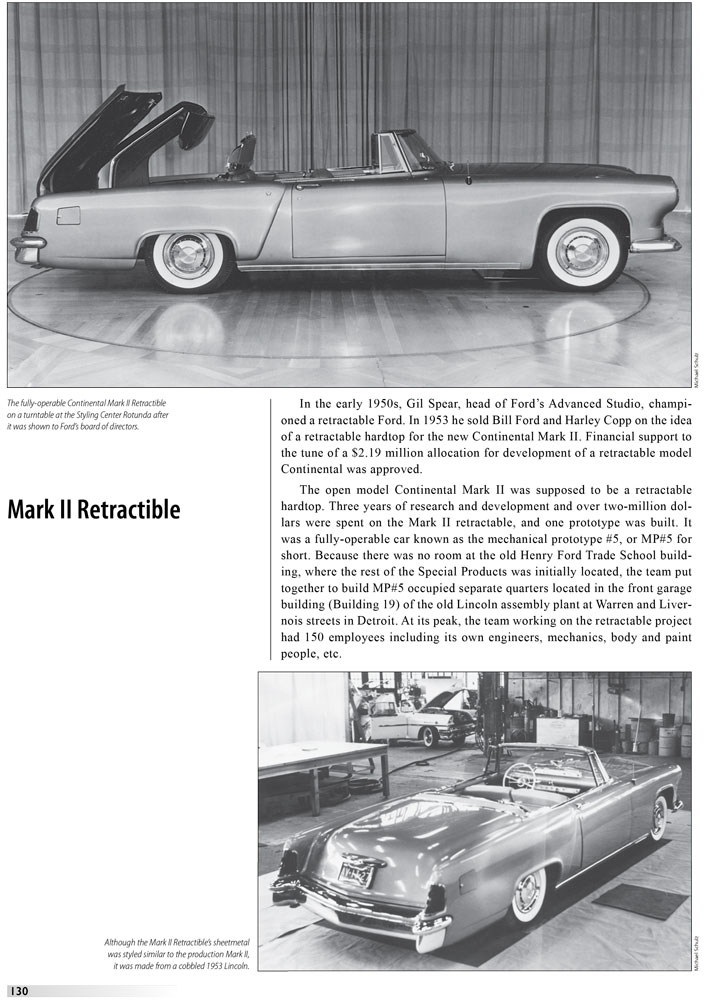
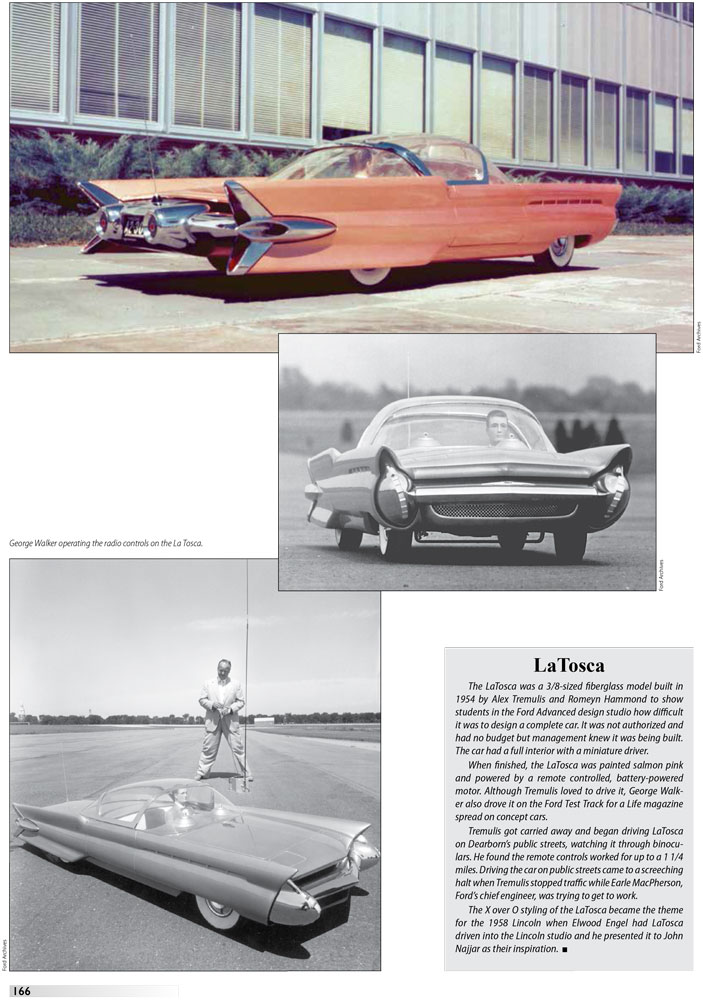
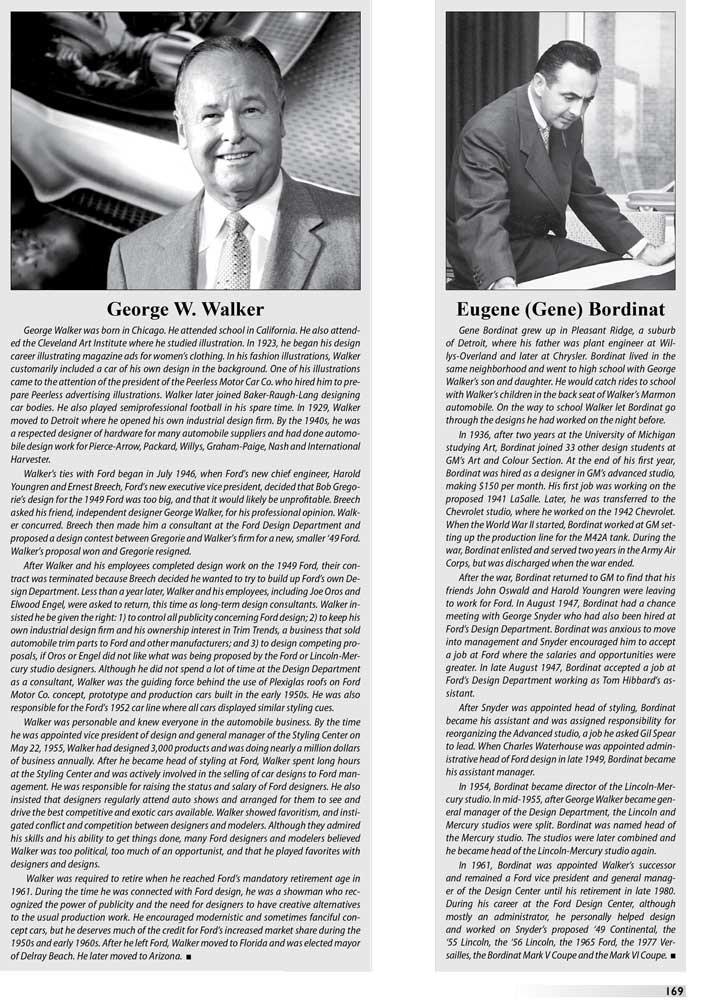
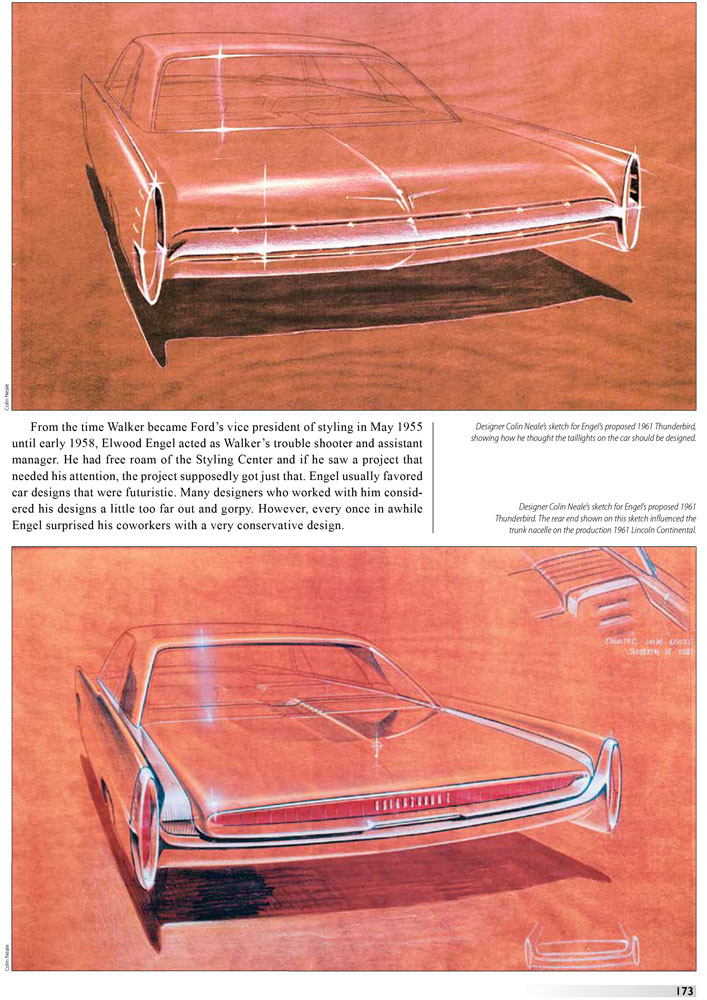
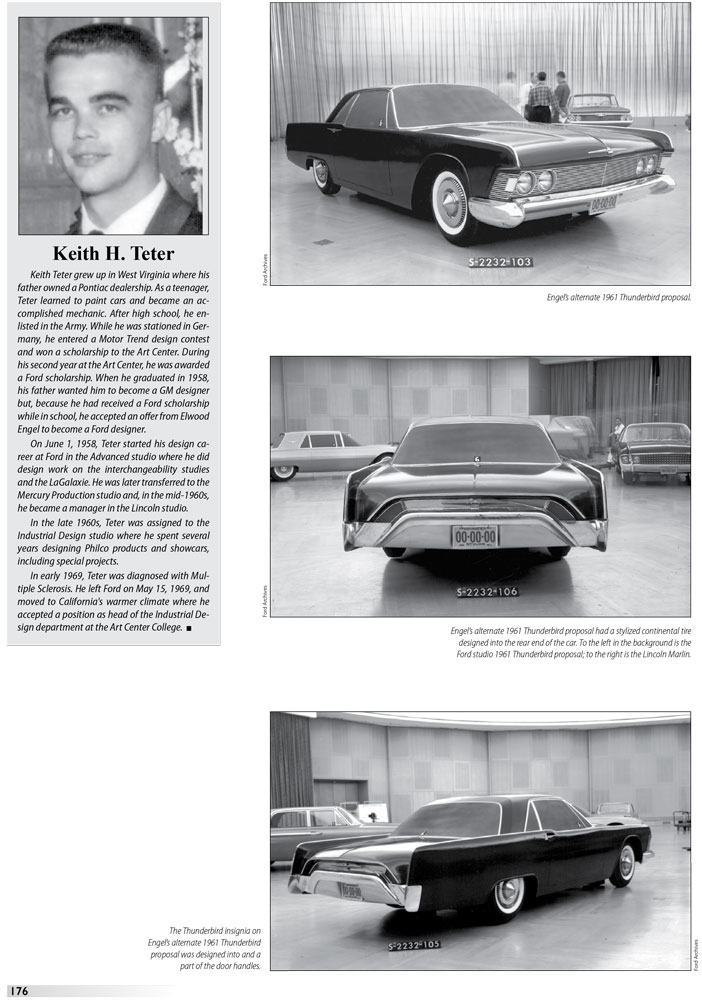
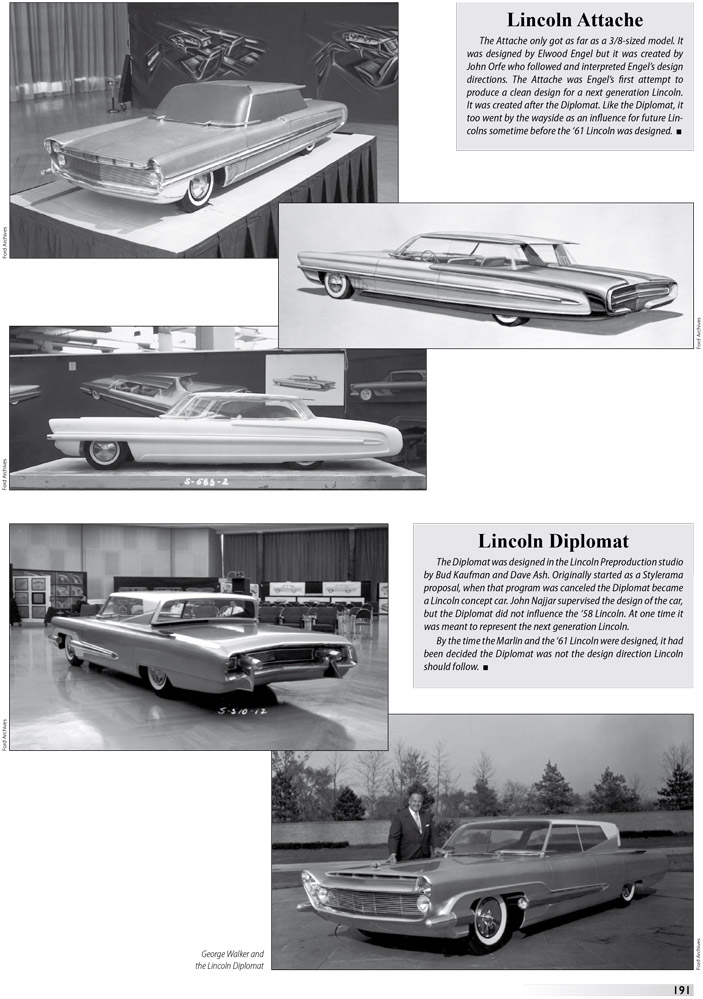
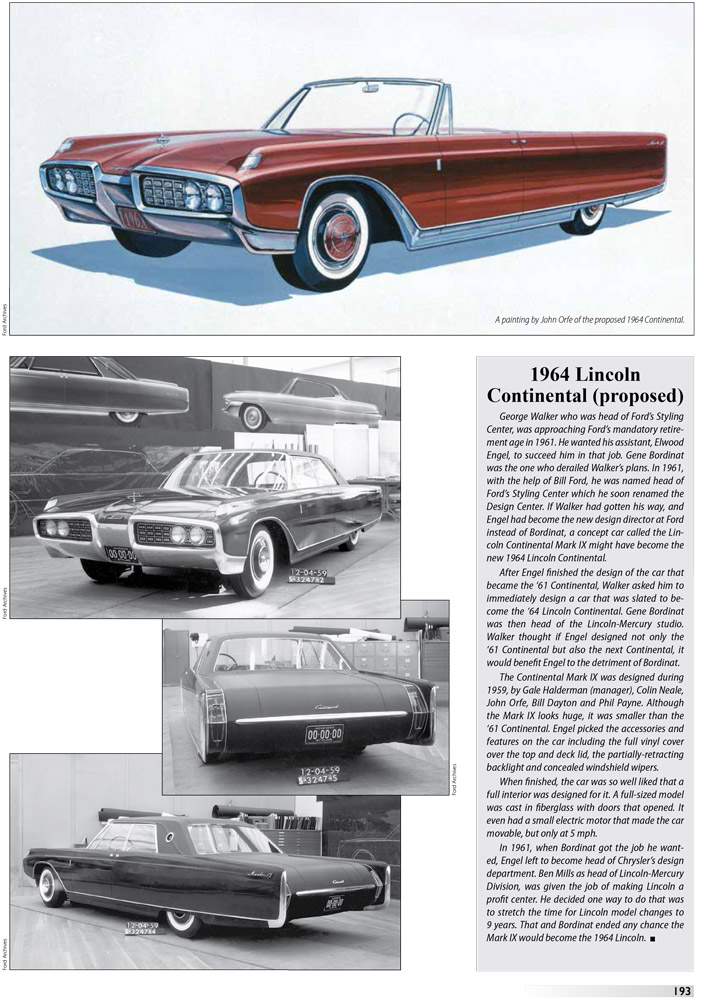
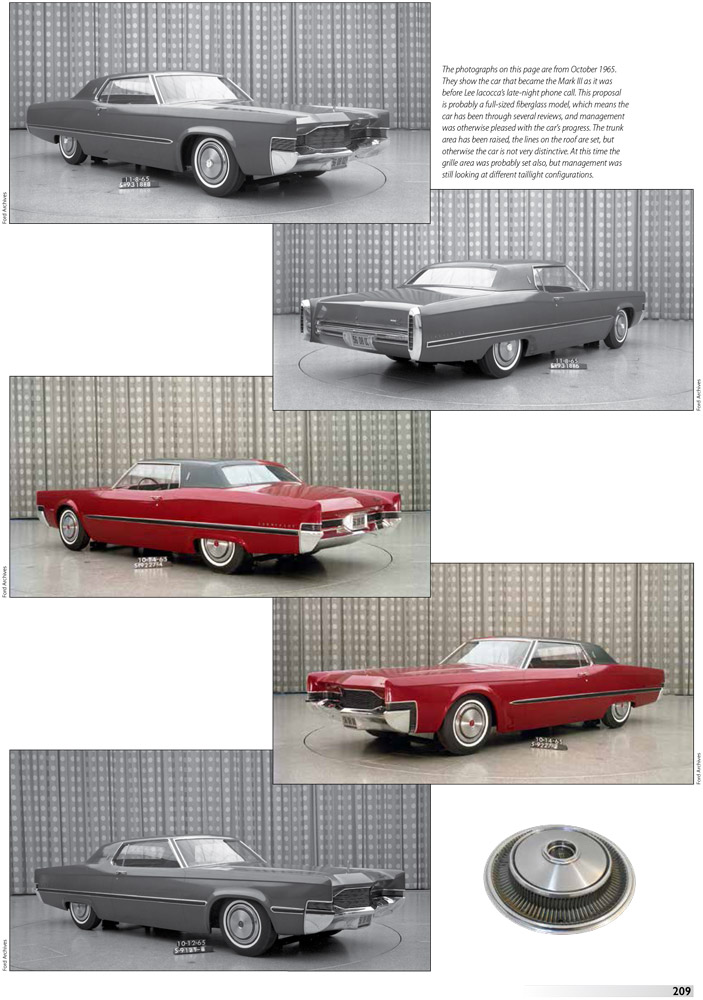
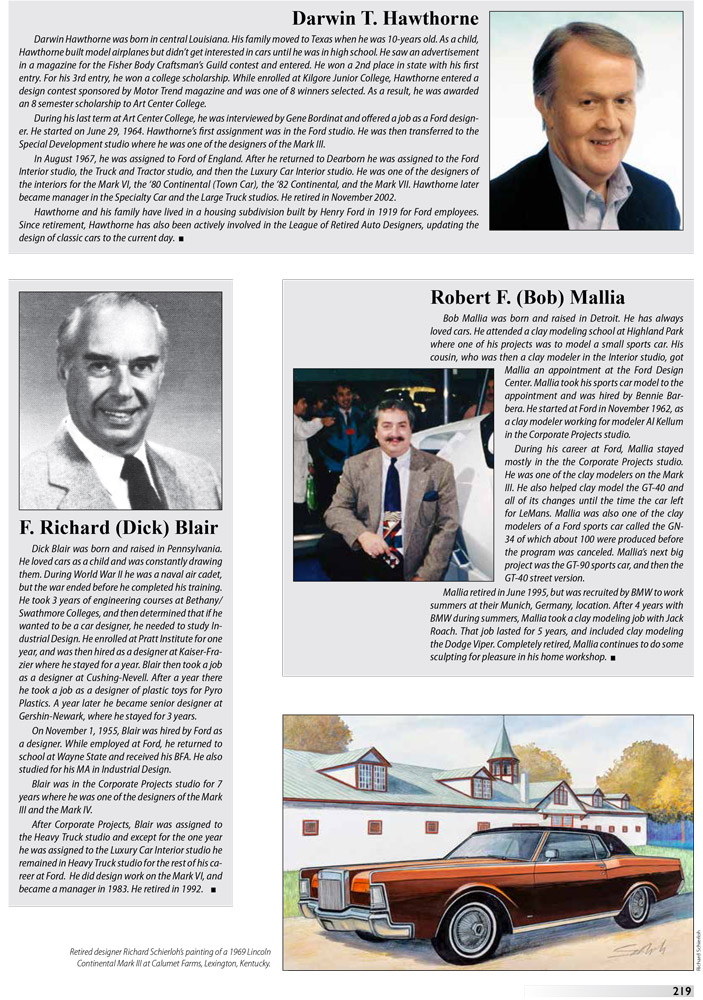
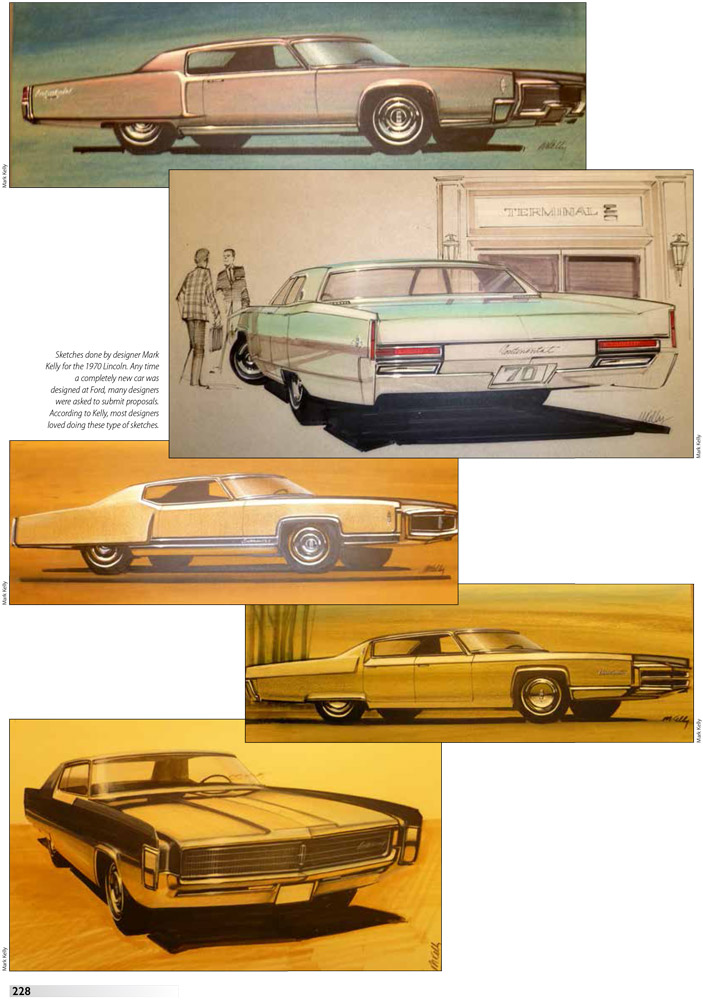
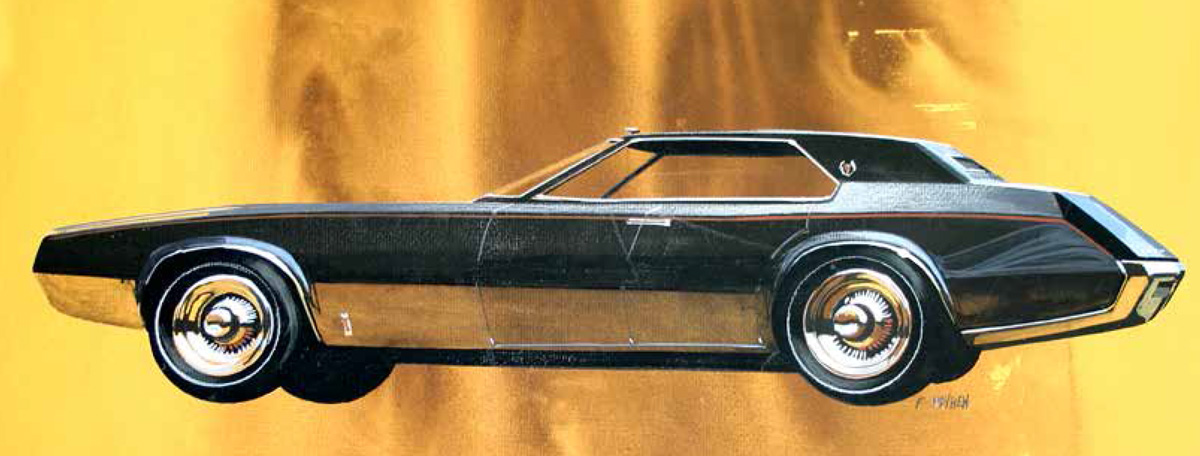
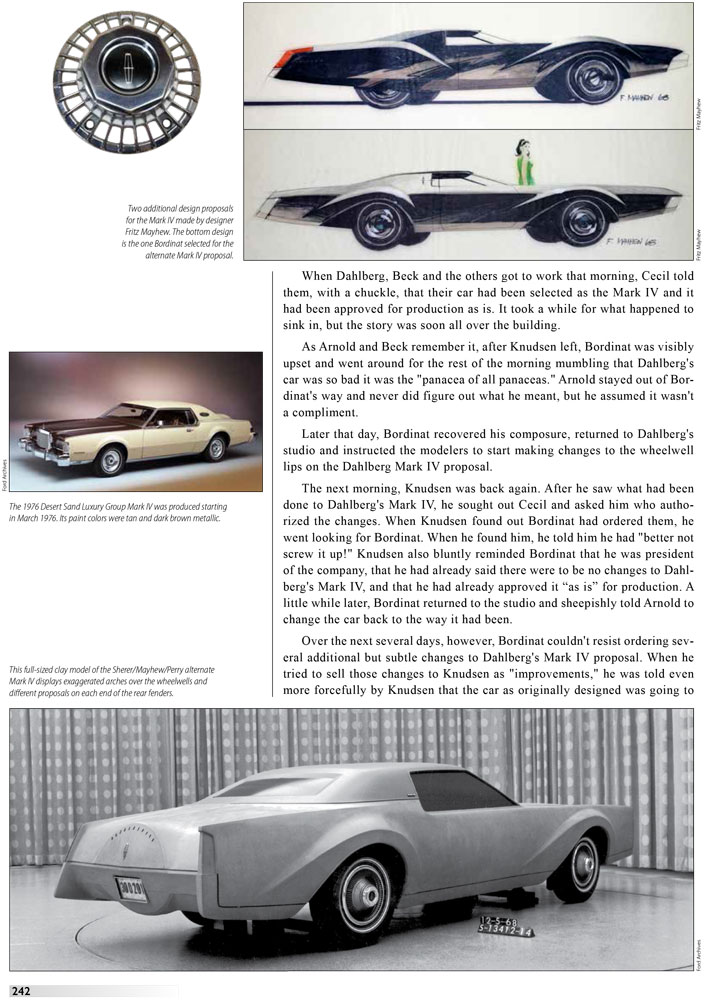
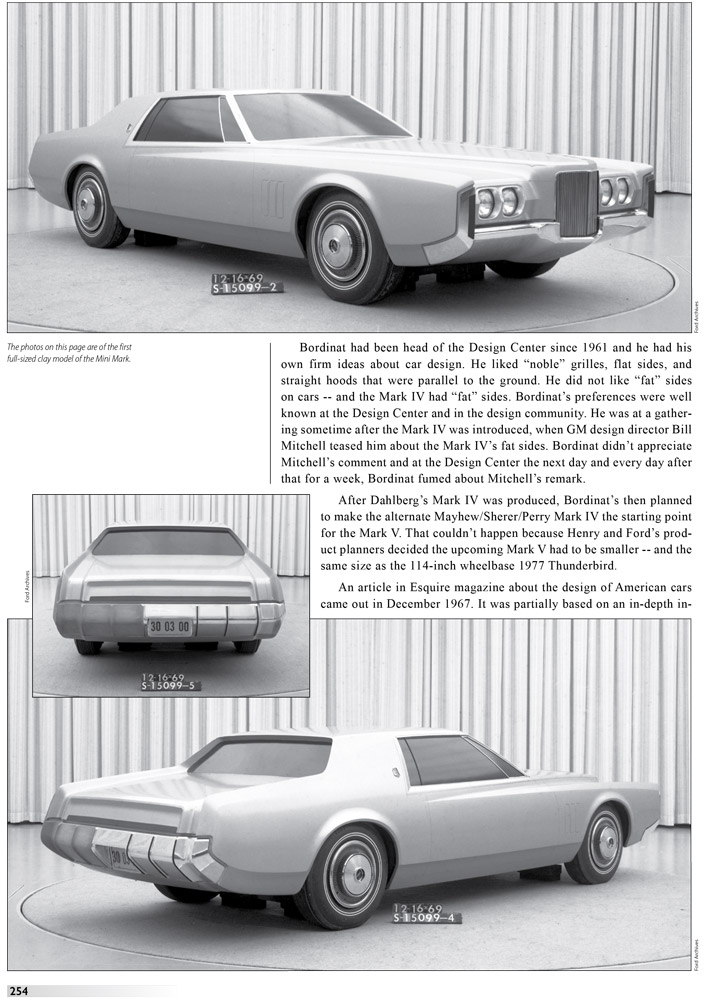
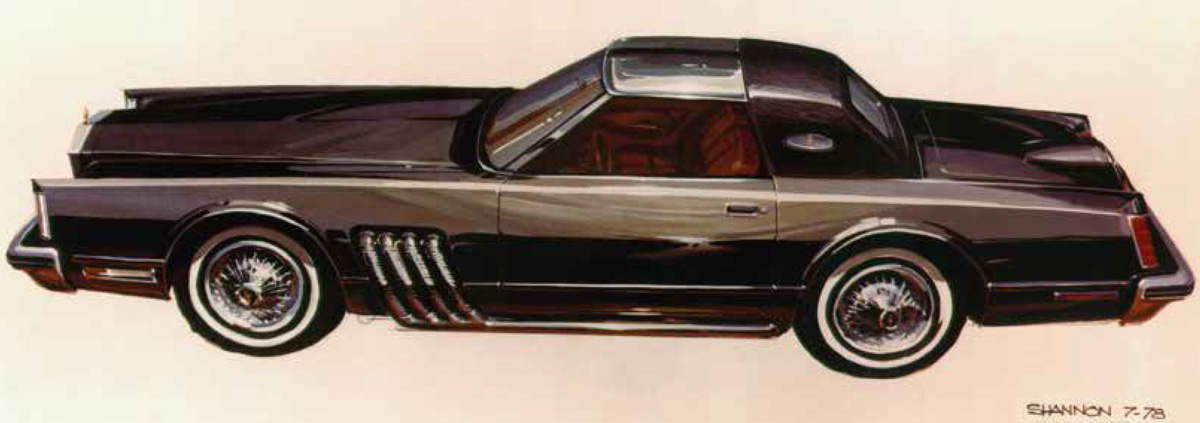
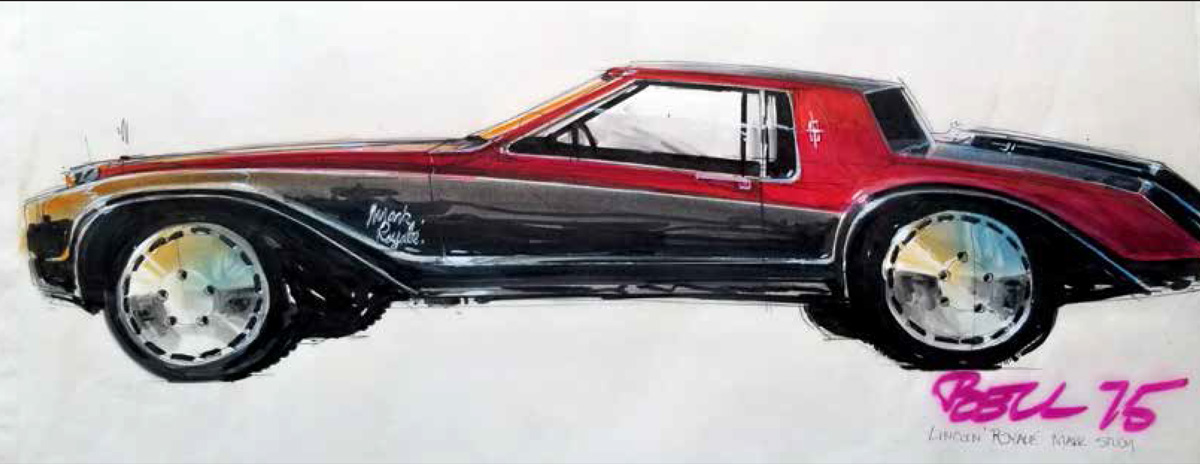
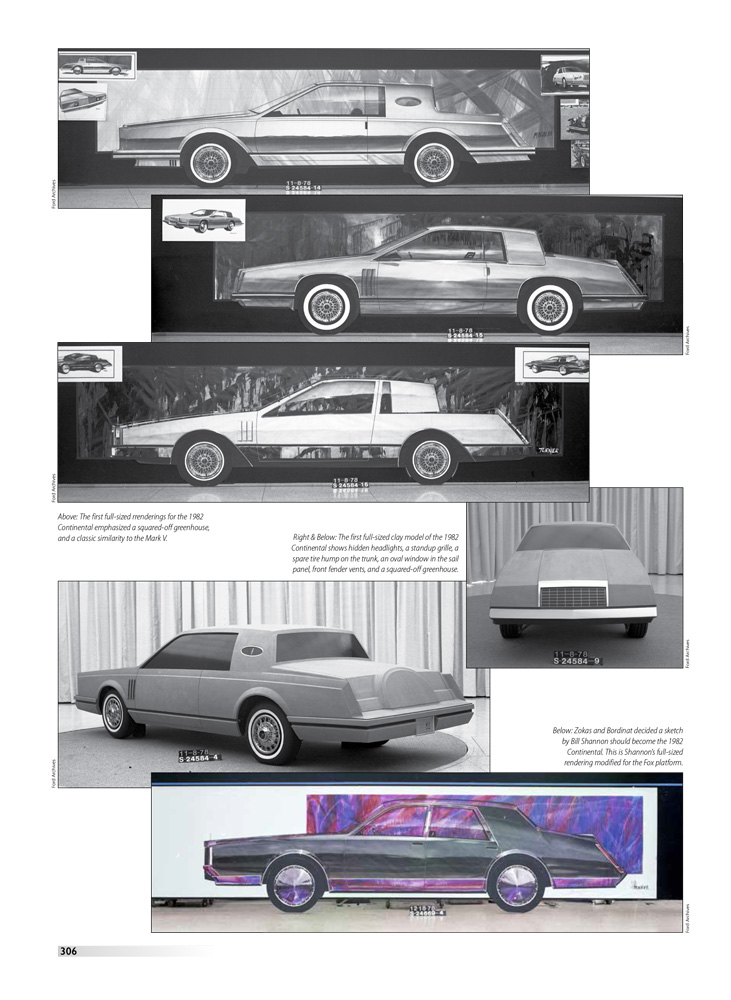
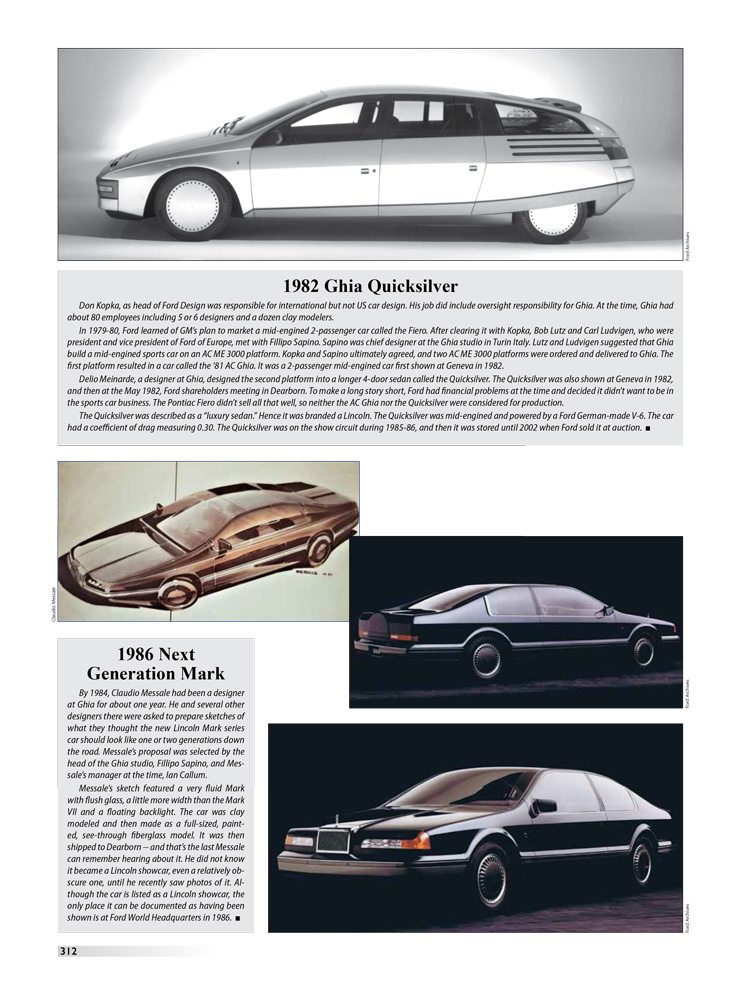


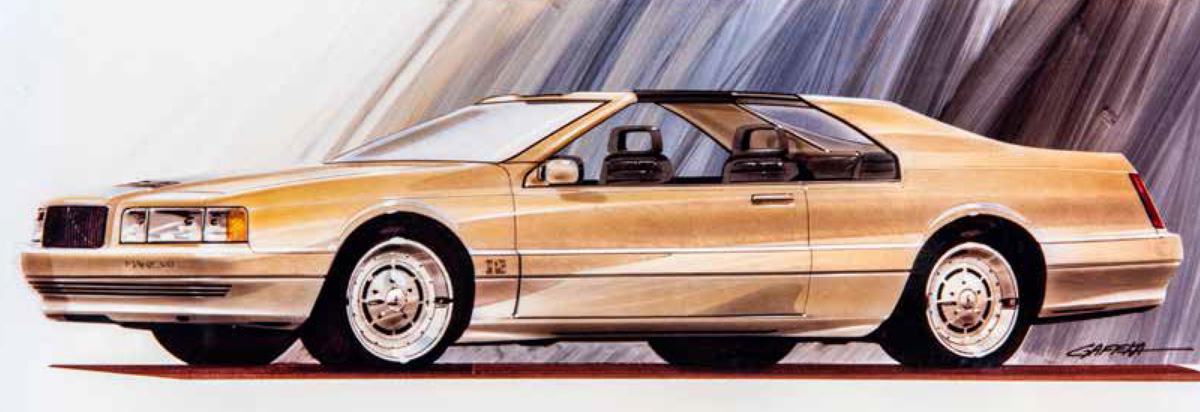
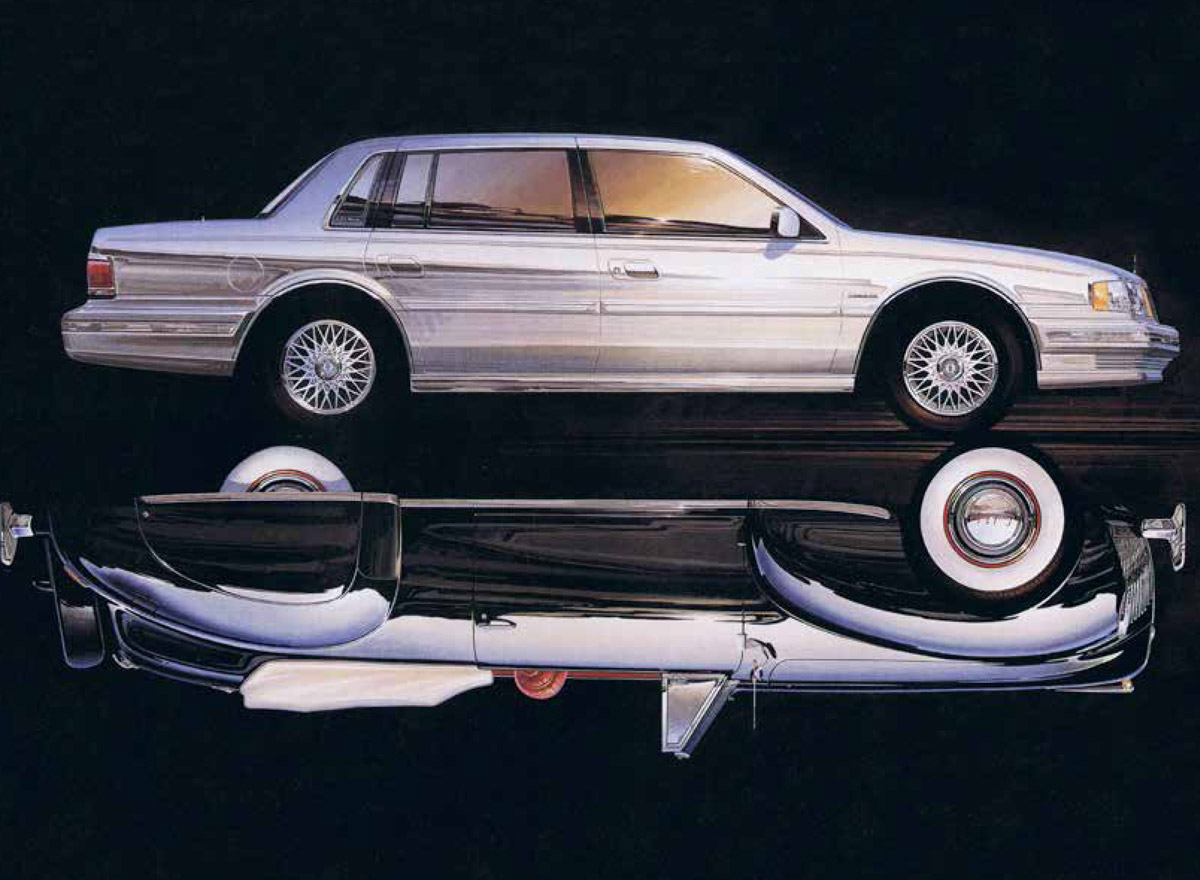
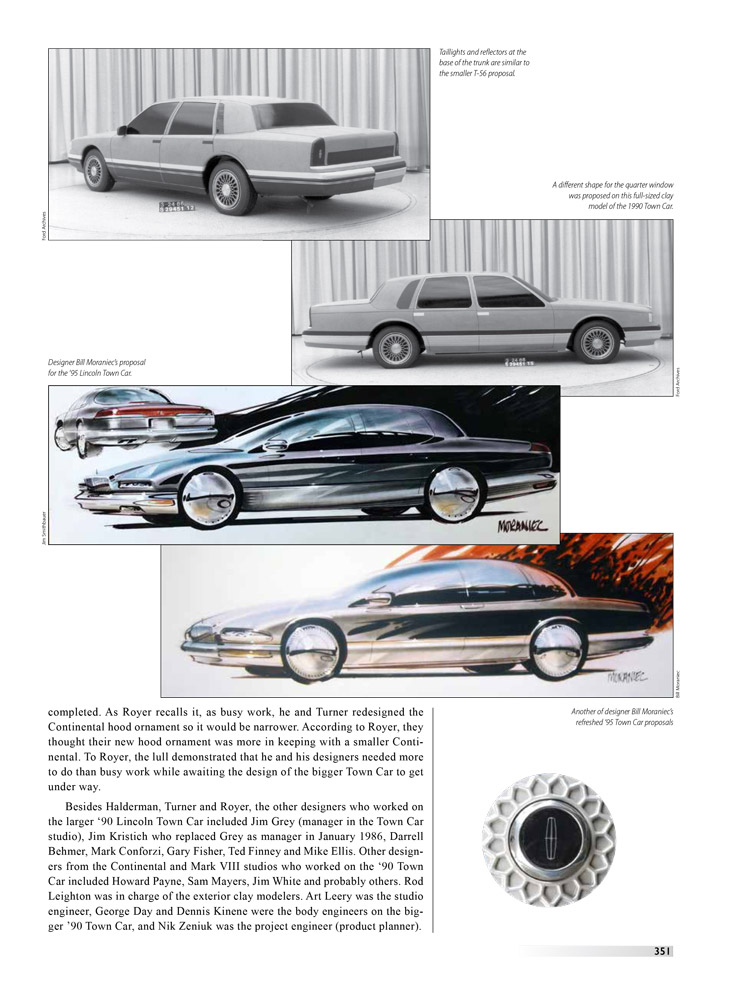
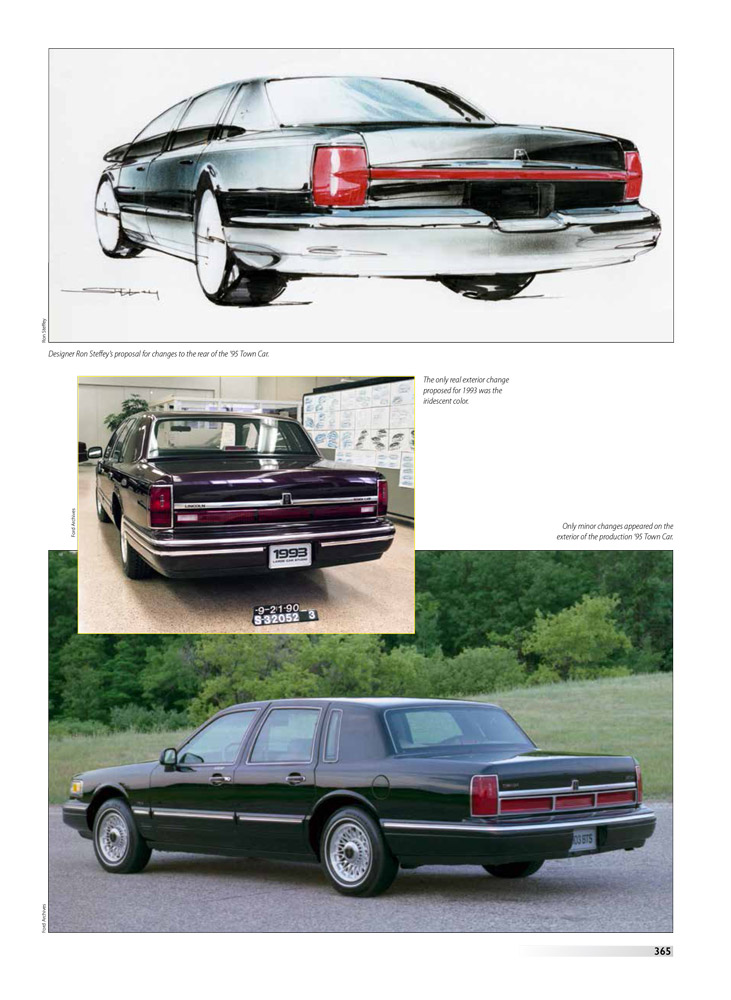

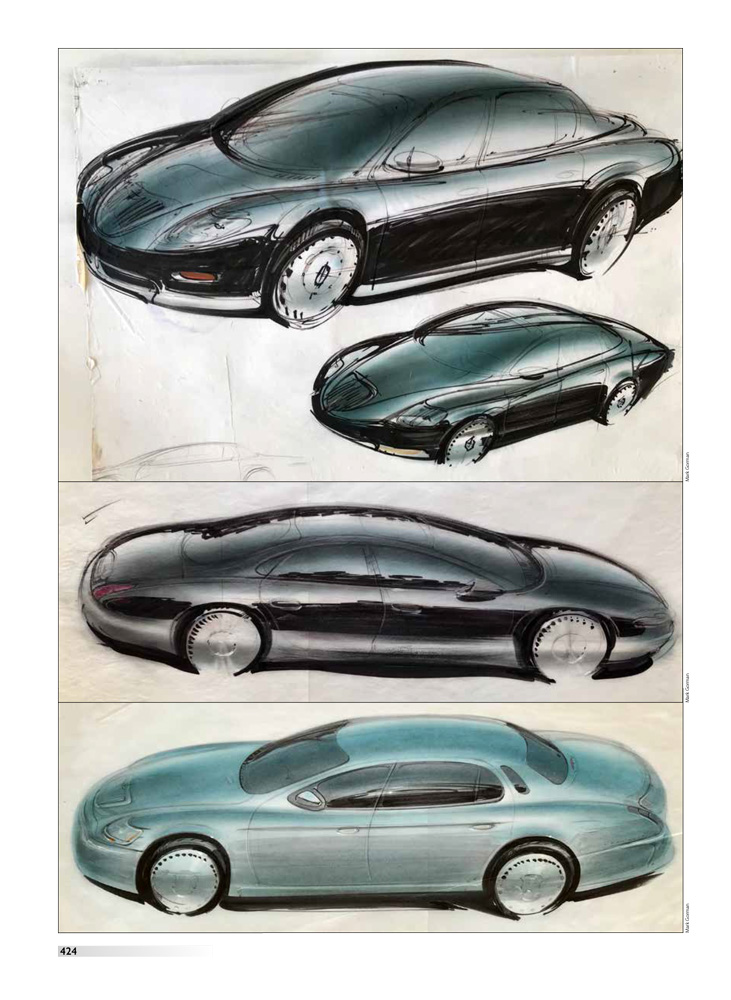
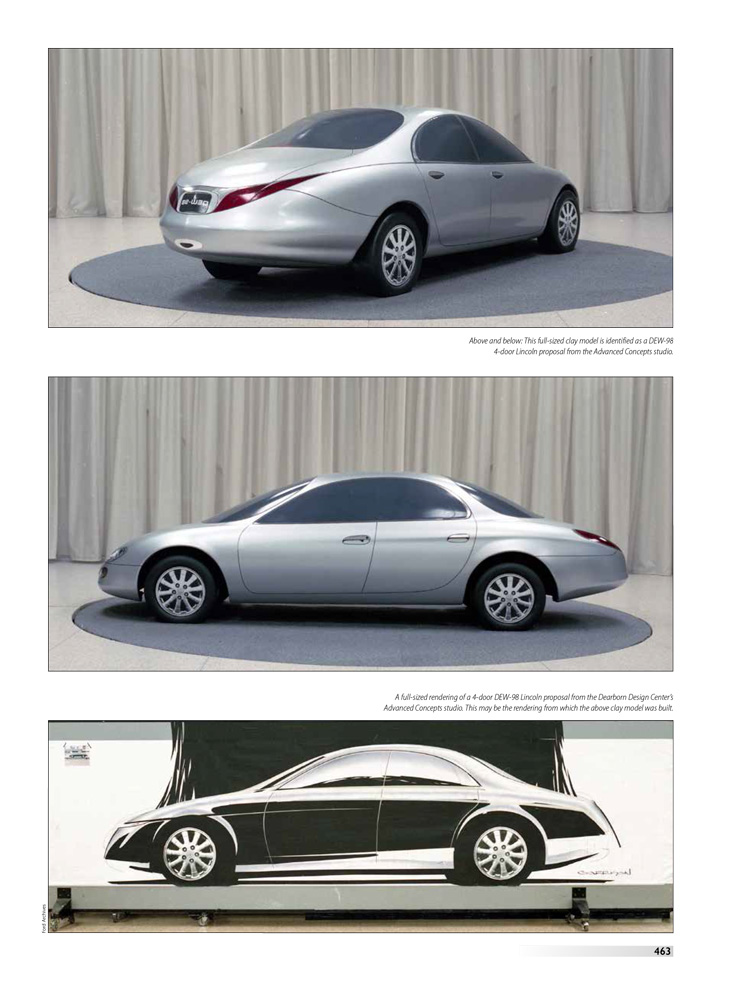
Sure glad to see this excellent work saved from the dust bin some of the concepts certainly should have made production, nothing short of amazing as is the article…
Always love your pieces, thanks for putting them out there… So many designers work would be lost and not remembered if it was not for you guys, let alone the names of these incredibly creative people. Your site gives the public names and faces to put with the designs… sadly, generally lacking in this country… many of the great designers of Europe and Japan are known but not so much in this country.
Great review of an interesting book. Thanks Gary for printing it.
Having worked for Ford Styling in the Lincoln Studio in 1963 (before I left and went to GM in 1965), it was fun to see some of my fellow designers and the cars we did.
One observation not mentioned in the review (but may be in the book): How much Ford Styling was controlled by the Product Planning Group. The large group of designers sketched, the modelmakers moved clay, then the clay model would disappear…only to reappear in the studio after the Product guys reviewed the designs and added their input. Rarely if ever did a designer participate in the design reviews. Which lead to some crazy ideas, like the Continental clay that reappeared in the studio with portholes pasted onto the side of the front fenders. Not much opportunity for a single designer to have design responsibility or authorship or satisfaction.
Fortunately for me, GM did not operate that way.
Thank you posting the review of this book and photos. Having owned a 1970 Mark III, a 1991 and ’94 Town Car, I’m happy to see that there is finally a comprehensive book on Lincolns and Lincoln design. Keith Teter, who was mentioned in the book, was an instructor of mine while attending Art Center College of Design between 1975 and 1977. I have always wondered about his Ford design background since he never talked about it to us students. As mentioned in his bio, he was a skilled mechanic and body man, demonstrated by the 1930s BMW 328 that he restored and brought to school one day.
Hi:
Would like to purchase the Lincoln book. Please advise.
Best,
LT
Looks like a wonderful book….minor quibble….why is a late 20s Lincoln on the dust cover if the book covers the Zephyr (late 30s) to the LS? Expected availability?
Thank you for the review. I look forward to purchasing the book. My Uncle, Richard Schierloh, is included in it.
The Lincoln design heritage book is truly a masterpiece and I hope these people produce more books in the future